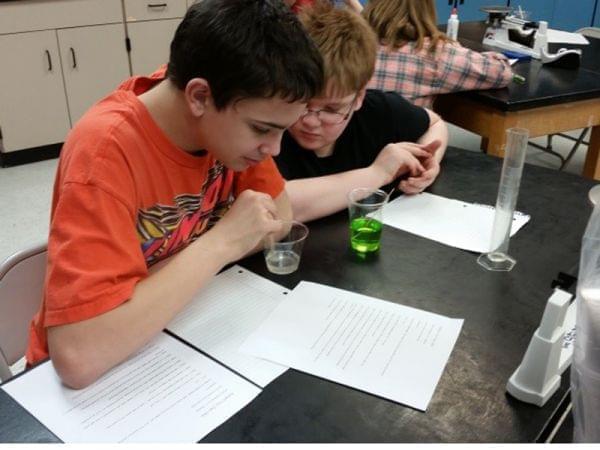Easy DNA-Extracting Experiment Using Student Cheek Cells

Seventh-grade students at Riverview Grade School in Peoria, Illinois extract their DNA.
More often than not, science teachers face small or non-existent budgets in their classrooms for laboratory experiences. Recently, I was looking for a way to expand my DNA and Genetics unit with an experiment or laboratory activity. Typically, we build a model using paper or beads. I have realized that this does not allow the students to really grasp the true size of DNA. What I found when searching PBS Learning Media was a step-by-step video resource that demonstrated how to extract human DNA from cheek cells using only household chemicals. There’s very little set-up needed and hardly any clean-up. I was able to easily add this activity to the classroom lesson using materials I already had in my supply cabinet.
As a hands-on-teacher, I like to be able to demonstrate the labs to the student, but I feel demonstrations can waste chemicals, materials, and resources. With this video I was able to use it as my demonstration tool and I could still replay it as many times for absent students.
Although this was not inquiry based, the laboratory experience still leads the students to ask and wonder more about the DNA make-up of other plants and animals. Plus…they were able to see THEIR own DNA, play with it and pull the small delicate strings from the solutions.
“I couldn’t wait to see our DNA. It was really cool to see it form,” said one of my 7th grade students from Riverview Grade School in Peoria.
After running the procedure, the students started asking if the same process could pull DNA from other living objects, transforming this activity into an inquiry- based lab. I had a stash of fruit on hand in anticipation of these further questions. The class then spent the rest of the period trying the process on a variety of plants and fruits. Students pulled DNA from strawberries, bananas and a variety of classroom plant leaves.
Strawberries ended up being the easiest to see and to pull from the solution since it is an octoploid (having 8 sets of seven strawberry chromosomes). Plant cells were a bit more difficult to obtain from the leaf by scraping; students might have more luck in using the whole leaf ground into solution.
Overall, the student response was pure excitement in seeing their own DNA, and ensures I will include this laboratory experience in my future DNA and Genetics units.

